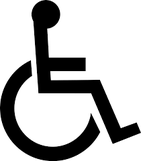Graphic Design
Graphic Design refers to the idea of communicating information through the use of pictures rather than the written word or speech. Graphic design, or communication as it is sometimes called, is responsible for the most of the images we are surrounded with in our day to day lives. As we travel to school every morning we see simple images on road signs that warn us about impending hazards and roads conditions, we see posters that advertise products through pictures and basic text, we identify our school by its uniform and logo and we know which toilet to use by the picture on the doors. Graphic designers use a number of devices to help them communicate information. The most common include symbols, logos, diagrams and maps. Although graphic design is based on visual communication (pictures), in many cases it is combined with some basic text (words).
symbols
A symbol is a very simple image that communicates a message. Symbols are important in our day to day lives because they can tell us something in an instant. A place where a lot of signs with symbols are used is the airport. This is so that overseas visitors who do not speak English can understand the sign by the symbols used.
what do you think these symbols are trying to tell us?
logos
Logos, like symbols, communicate information through a simplified image. Logos allow us to identify a company or product in an instant. We can all identify the Mc Donald's and Facebook logos immediately. Logos play an important role in establishing a company's identity.









